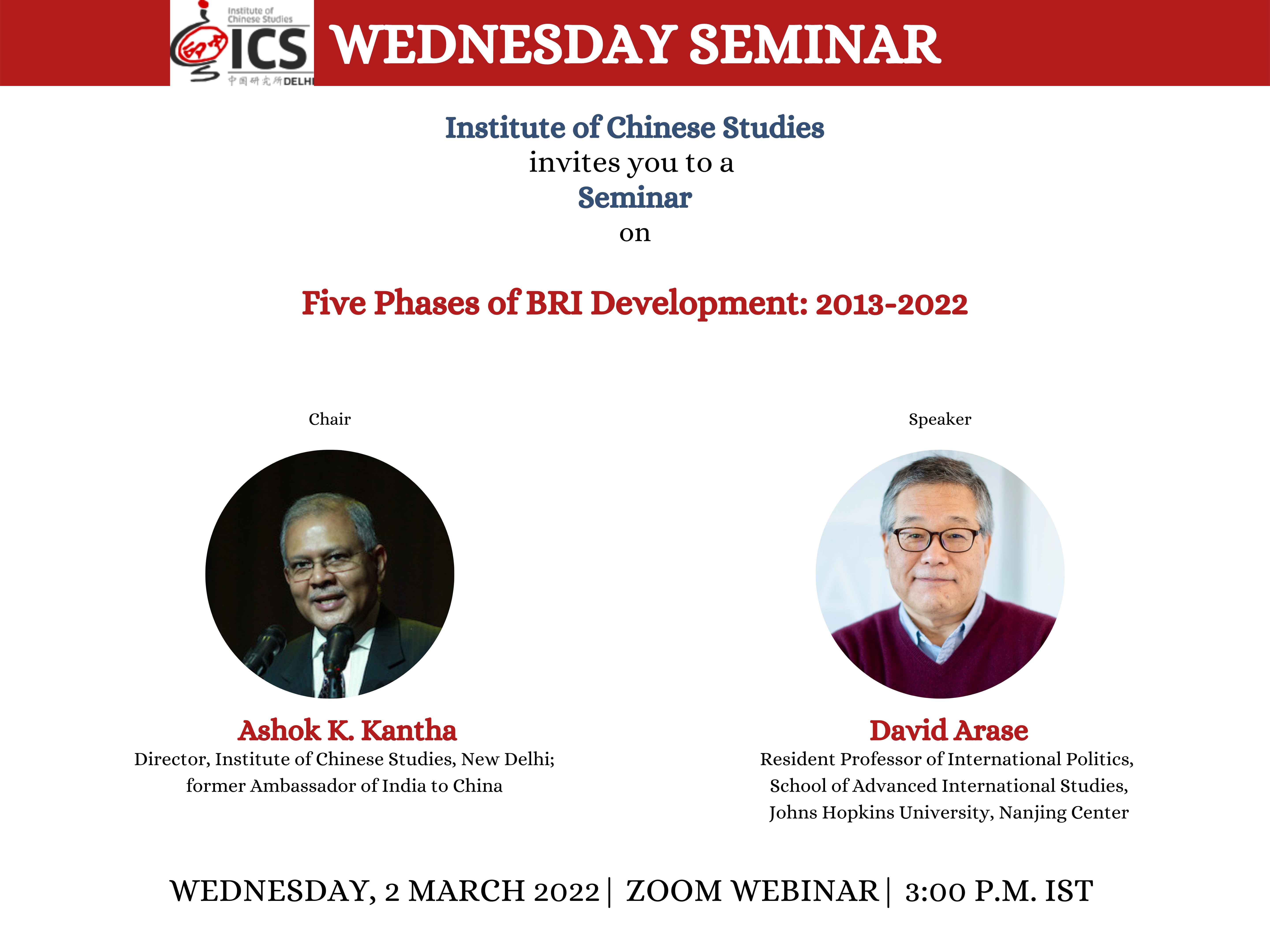 |
| |
| Five Phases of BRI Development: 2013-2022 |
|
Dr. David Arase, Resident Professor of International Politics, School of Advanced International Studies, Johns Hopkins University.
Wednesday Seminar | Zoom Webinar | 2 March 2022
|
| |
|
The rollout and development of BRI cooperation is seen as a dynamic process and is discussed in terms of five successive phases: 1) Rollout; 2) Routinization; 3) Community of Shared Destiny; 4) Diversifying aims and adapting to constraints; 5) Covid and post-Covid adjustments. The overall process is seen as progressing from extensive to intensive development and as successively broadening in scope from economic to political, socio-cultural and security cooperation. Finally, BRI will be situated in the context of China’s “major power diplomacy” and “great struggle” to realize “a great dream.” This seminar discussed the various phases of BRI development as well as the context in which they are being realized in.
. |
| Watch> |
|
|
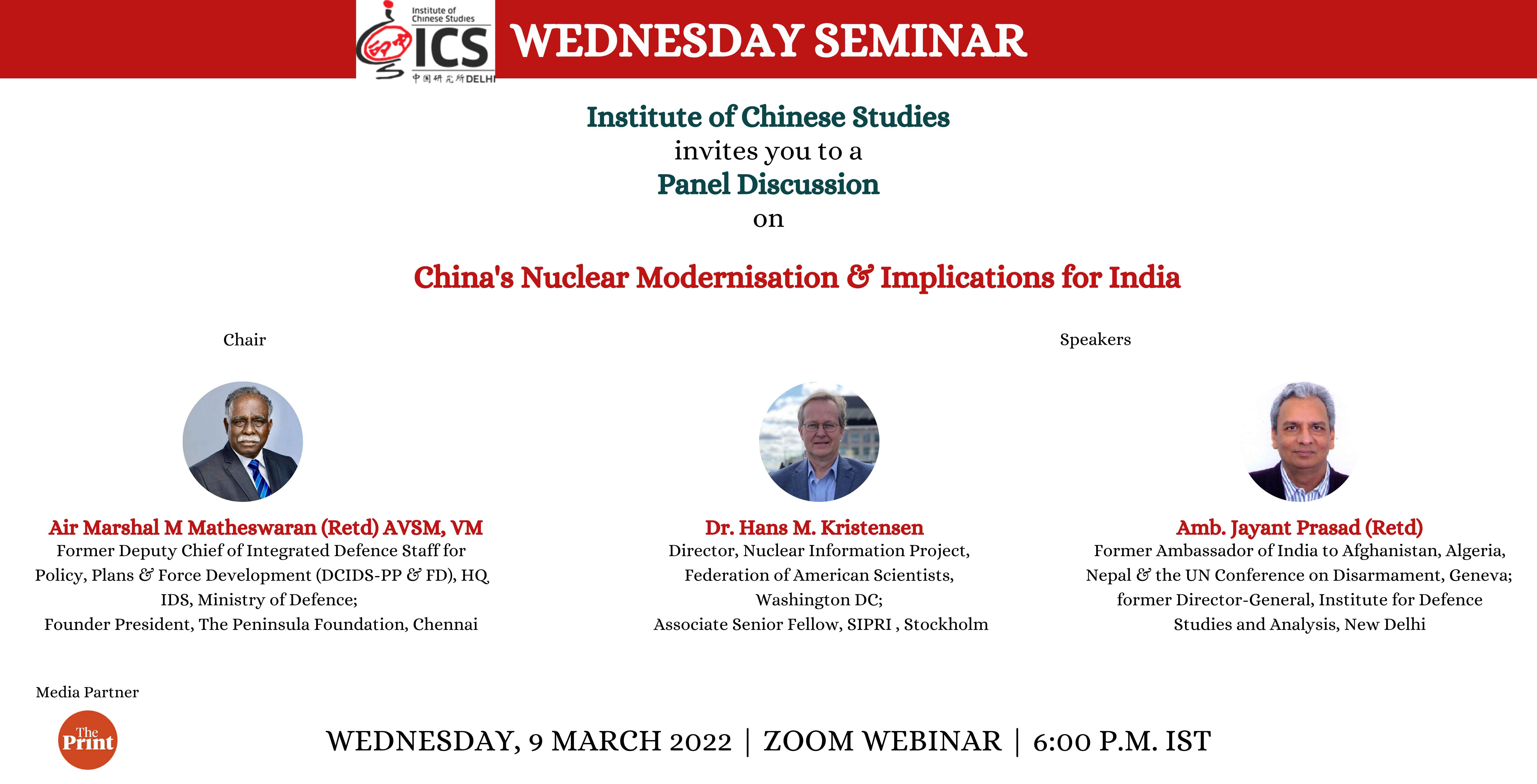 |
| |
| China’s Nuclear Modernisation and Implications for India |
|
Air Marshal M. Matheswaran AVSM VM (Retd), Former Deputy Chief of Integrated Defence Staff for Policy, Plans & Force Development, HQ IDS, Ministry of Defence, Government of India; Amb. Jayant Prasad (Retd), Former Ambassador of India to Afghanistan, Algeria, Nepal & the UN Conference on Disarmament, Geneva; Mr. Hans M. Kristensen, Director, Nuclear Information Project, Federation of American Scientists, Washington DC.
Wednesday Seminar | Zoom Webinar | 9 March 2022
|
| |
|
China’s nuclear arsenal is undergoing the most dramatic modernization since China first acquired nuclear weapons 57 years ago. In addition to increasing road-mobile ballistic missiles, the current phase involves construction of what appears to be more than 300 missile silos, launching additional ballistic missile submarines, as well as adding a nuclear bomber leg to its arsenal. Unlike previous nuclear modernization phases, the current upgrade is highly visible on commercial satellite images, which allows the public to participate in the debate about the nature and implications of Chinese nuclear forces in a way that has never been possible before. This seminar discussed monitoring of Chinese nuclear forces via analysis of satellite images and production of the Nuclear Notebook, potential implications for Chinese nuclear strategy and policy and examined the implications of China’s nuclear modernisation for India and India’s response.
. |
| Listen> |
|
|
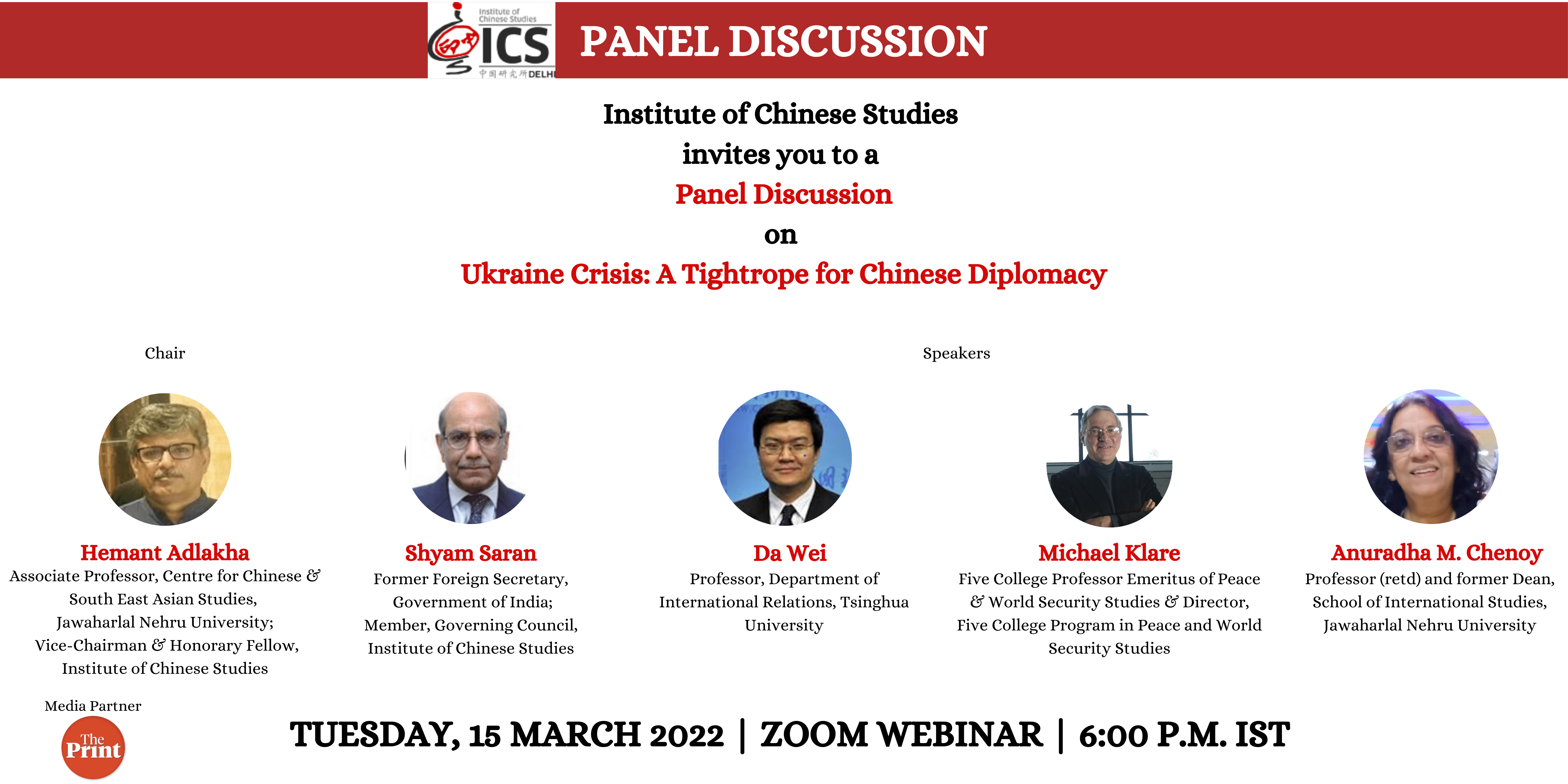 |
| |
| Ukraine Crisis: A Tightrope for Chinese Diplomacy |
|
Amb. Shyam Saran, former Foreign Secretary, Government of India; Prof. Da Wei, Professor, Department of International Relations, Tsinghua University; Prof. Michael Klare, Five College Professor Emeritus of Peace & World Security Studies.
Panel Discussion | Zoom Webinar | 15 March 2022
|
| |
|
The pounding of the Ukrainian capital Kyiv at 4 a.m. on 24 February by the Russian missiles has been called "the end of the post-Cold War" world order by one influential Chinese financial daily. Following the Russian military assault on Ukraine, China's "ambiguous" stance on the ongoing military action has been seriously questioned both internally and in the global press. On the one hand, notwithstanding President Xi asking President Putin to resolve the crisis through negotiations, China continues to avoid calling the Russian military action as "invasion." On the other hand, the ambiguity in the Chinese position on the war in Ukraine is manifested in the contradictory headlines in different state-controlled media. As one pro-market, pro-liberal Chinese financial newspaper has already issued an editorial headlined the "Russian Assault on Ukraine." Not to be ignored is China's annual "two sessions" this March where the PRC government is expected to set the GDP growth target for 2022 at just above 5%. With the war in Ukraine waging on, critics and investors are already hinting at Beijing's nervousness as to where Chinese markets are headed in the coming days. The proposed panel of experts attempted to explain and put in perspective several questions facing China in the face of ongoing storming of Ukrainian people by the Russian troops: did China act too quickly in siding with Russia on the "war game" in Ukraine? Is Beijing facing a diplomatic dilemma in the Ukraine crisis? Is China trapped by President Putin in this Russian-Chinese "marriage of convenience"? What are the domestic implications of the so-called sudden change of the Russia-Ukraine "chess game" into "war game" for China? Why are some Chinese strategic affairs analysts calling it a failure of China in the "battle of world opinion" on Ukraine?
. |
| Watch> |
|
| |
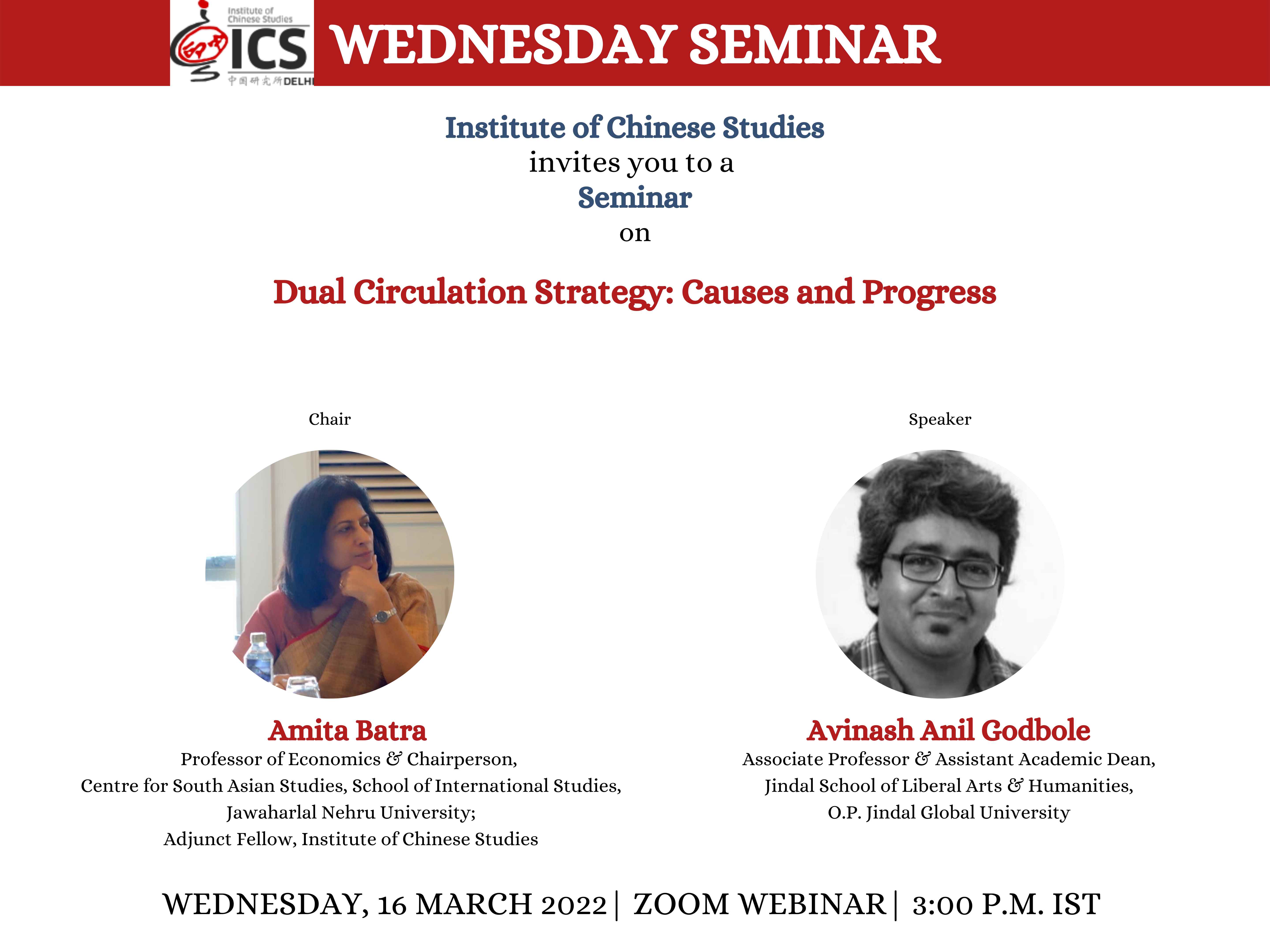 |
| |
| Dual Circulation Strategy: Causes and Progress |
|
Dr. Avinash Anil Godbole, Associate Professor & Assistant Academic Dean, Jindal School of Liberal Arts & Humanities, O.P. Jindal Global University.
Wednesday Seminar | Zoom Webinar | 16 March 2022
|
| |
|
In May 2020, as the world was grappling with Covid, Xi Jinping made an announcement that China was going to focus on developing what he called a “dual circulation strategy”. As a general objective, this strategy aims to promote innovation driven high-quality growth as a long-term target. It also goes well with China’s long stated objective of reducing regional and income inequalities. This is in line with the 2035 goal of becoming a “strong and technologically advanced country that is a global leader in both innovation and new forms of industrialization”. This plan was then formalised in the fifth plenum in October 2020 and the communique stated that the goal was to “comprehensively promote consumption and open new room for investments”. As is visible, it encompasses a diverse set of goals. Its meaning was redefined when the target of ‘common prosperity’ was set. Dual Circulation has been interpreted in various ways- that it is a defensive strategy or as a proactive strategy. It has also been interpreted as China’s response to de-globalization tendencies. Some of the questions that were discussed include various influencing factors behind this strategy & how it would impact the reform process? What sort of structural adjustments are needed domestically for it to work? How would it address the issues of social security and consumption? This seminar studied the driving factors behind the dual circulation strategy and attempted to understand how the diverse set of stakeholders have responded to the strategy and if and how it has led to any discernible changes on the ground thus far.
. |
| Read More> |
|
|
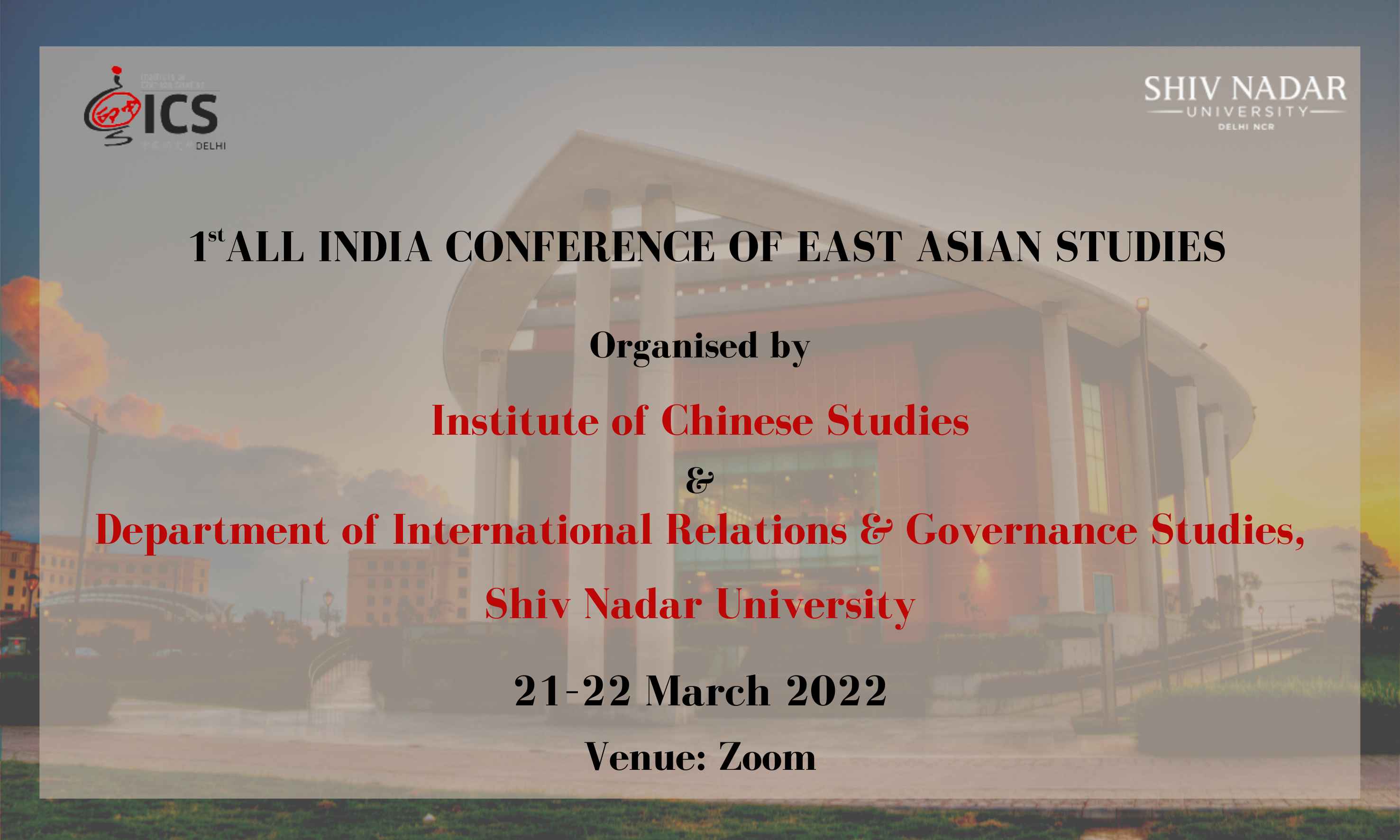 |
| |
| 1st All India Conference of East Asian Studies |
|
Wednesday Seminar | Zoom Webinar 21-22 March 2022
|
| |
|
The 1st All India Conference of East Asian Studies (AICEAS) was held virtually by the Institute of Chinese Studies (ICS), New Delhi and the Department of International Relations & Governance Studies (IRGS), Shiv Nadar University (Delhi NCR) on 21 and 22 March 2022. H.E. Taro Kono, Director, Liberal Democratic Party Public Affairs Department; former Minister, Administrative Reform and Regulatory Reform; former Minister for Foreign Affairs and Minister of Defence, Japan, delivered the Keynote Address. Prof. Kim Yeon-chul, former Minister of Unification, Republic of Korea; former President, Korea Institute for National Unification and Professor, Inje University, Republic of Korea, delivered the Valedictory Address. Eminent and young scholars from over 20 institutions from India and abroad showcased recent scholarship on various facets of East Asia over 10 sessions spread across two days. The principal objective of the All India Conference of East Asian Studies (AICEAS) is to foster interest in and strengthen research on East Asian Studies, primarily focusing on Japan, South Korea, North Korea, Mongolia and Taiwan. The conference will be convened annually in collaboration with a leading Indian university/research organization across India.
. |
|
|
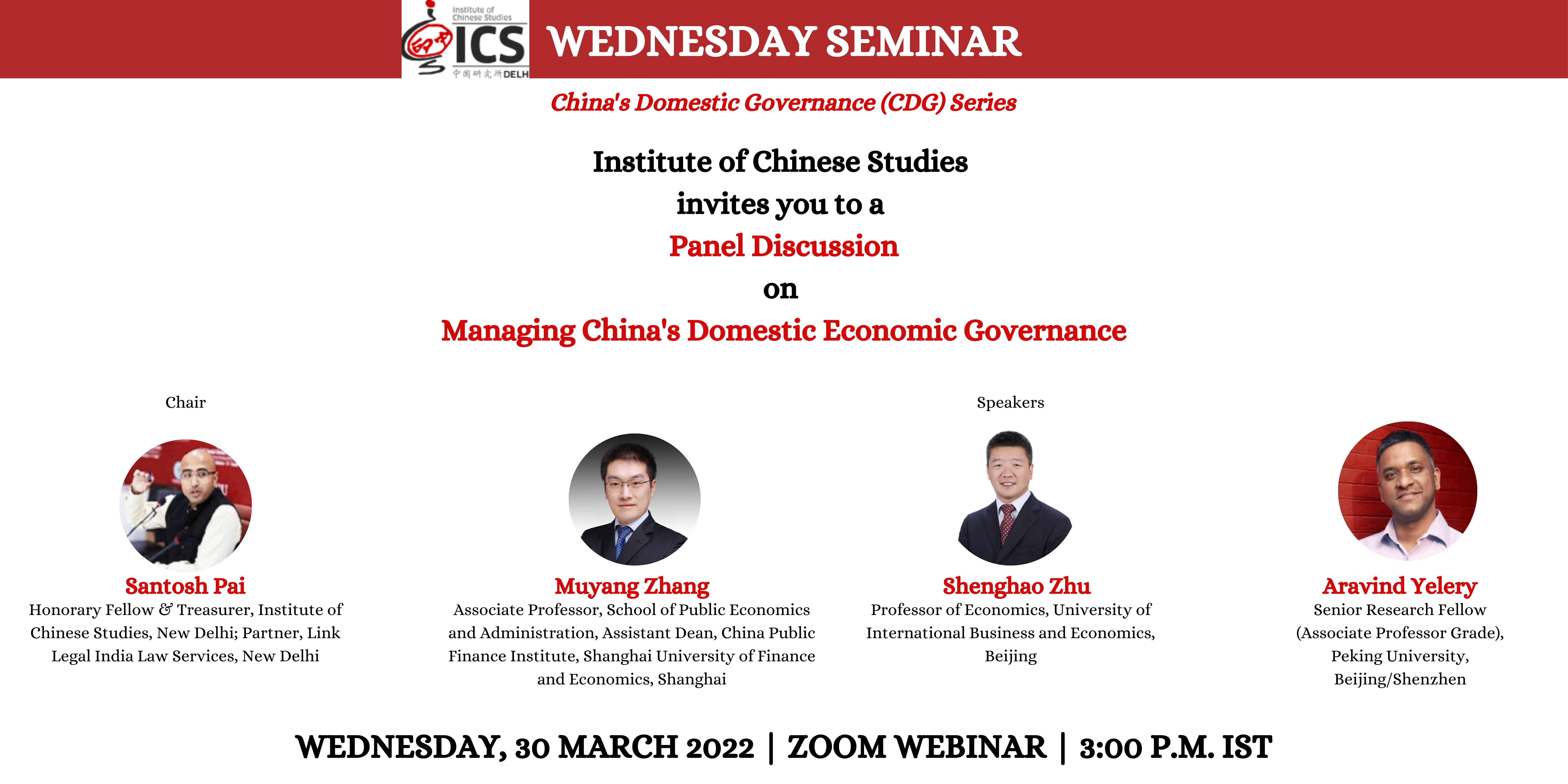 |
| |
| Managing China’s Domestic Economic Governance |
|
Dr. Muyang Zhang, Associate Professor, China Public Finance Institute, Shanghai University of Finance and Economics; Dr. Shenghao Zhu, Professor of Economics, University of International Business and Economics; Dr. Aravind Yelery, Senior Research Fellow (Associate Professor Grade), Peking University.
Wednesday Seminar | Zoom Webinar | 30 March 2022
|
| |
|
China’s journey in the global economy earned it the title of ‘unstoppable juggernaut’, but the growing discussions on China’s economic future indicate the extreme swings. This is evident especially in the aftermath of the global financial crisis, trade war, plunging exports and overwhelming pressures which is causing weak recovery. As a result, in a downturn, the state planners resort to various tools to control the crisis. Handling a bout of economic weakness has not remained as simple as it used to be in the past. The leadership and the planners are preparing to mitigate traditional and newer forms of challenges. China has been speeding up spending on infrastructure, taking more neutral steps towards income taxes and relaxing some restraints on bank lending. These directions look more evident than in the past. Cleaning up the financial system, stabilising growth and deleveraging are key measures China is adopting to manage its domestic economic governance. At the same time, China also explores to continue the generous, supportive economic policies to stimulate growth from below. This seminar discussed how well China is equipped to manage such stress and work around its domestic economic governance.
. |
| Watch> |
|
|





